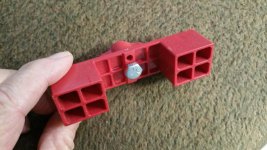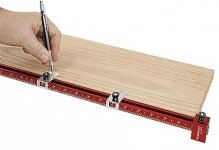Steven Owen
Member
- Joined
- Oct 4, 2017
- Messages
- 443
Do you guys feel the Woodpeckers story stick would be useful for marking the locations of dominos on longer boards and sheets? Do you think there’s other tools and methods that would work better with the same level of repeatability for jointing multiple boards/sheets?


